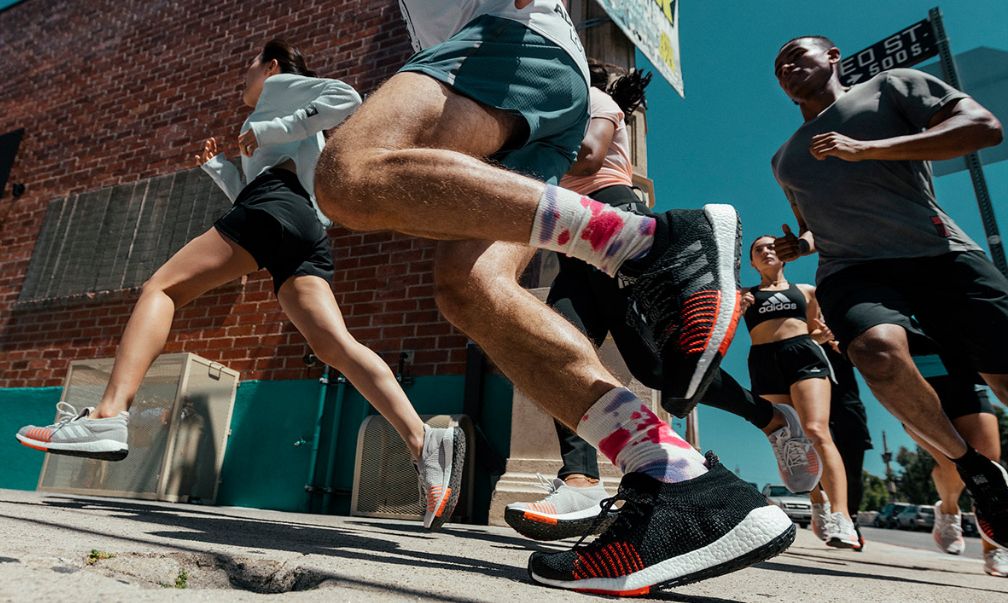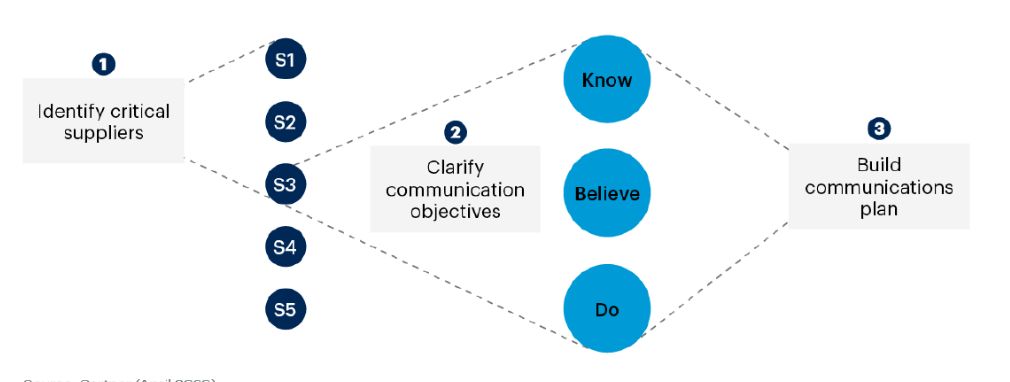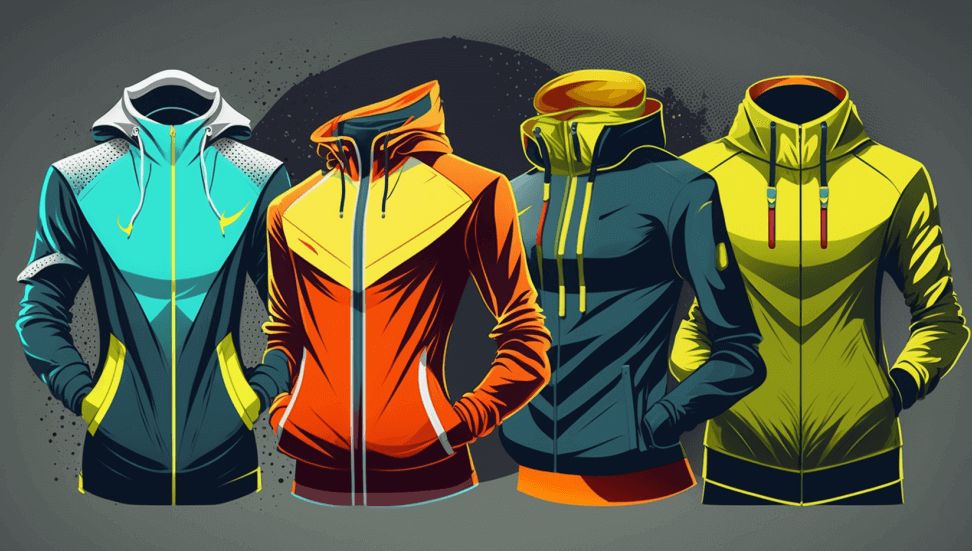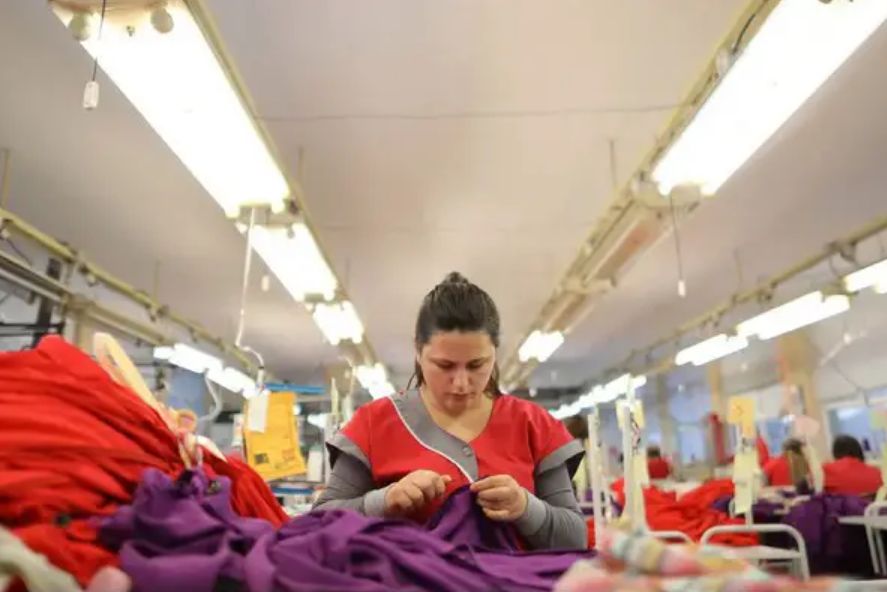Scaling Your Business with the Right Gym Clothing Wholesalers and Sports Wear Supplier!
 2024-02-18
2024-02-18

 Sansansun
Sansansun
Introduction
In the world of commerce, victory hinges on allies. Your business, a ship in vast seas, seeks the right gym clothing wholesalers and Sports Wear Supplier. This blog steers through the waves of choice, revealing how the ideal partner fuels your business's ascent.
What Are The Essential Qualities To Look For In A Sportswear Supplier?

·Quality Fabrics
Sportswear longevity hinges on top-tier fabric selection. Seek suppliers with advanced textile technology. Durability, comfort, and moisture-wicking features are paramount.
Prioritize fabric resilience for rigorous activities. Optimal fabric choice enhances sportswear functionality. Assess fabric types for specific sports requirements. Ensure materials withstand frequent washing. Fabric quality dictates sportswear lifespan and performance.
·Reliable Production
Choose suppliers with proven production consistency. Reliable clothing manufacturer maintain high standards across batches. Consistency is key for sports gear uniformity. Look for suppliers with minimal defect rates. High production standards ensure superior sportswear.
Scrutinize the production process for quality assurance. Regular facility audits indicate production reliability. Dependable manufacturing is crucial for sportswear excellence.
·Timely Delivery
Opt for suppliers with prompt delivery records. Sportswear needs often align with seasonal demands. Swift turnaround times are essential. Delays can disrupt athletic preparations.
Evaluate logistical efficiency of suppliers. Punctuality is in delivery bolsters supply chain stability. Assess past delivery timelines for reliability. Fast and accurate deliveries are crucial in sportswear supply.
·Customization Options
Select suppliers offering diverse customization. Tailored sportswear meets specific team requirements. Customizable options elevate brand identity. Flexibility in design differentiates sportswear.
Seek suppliers adept in bespoke designs. Customization reflects team spirit and unity. Ensure suppliers offer a variety of custom features. Personalized sportswear enhances team morale and identity.
·Ethical Practices
Prioritize suppliers adhering to ethical standards. Ethical production ensures workforce fairness. Sustainability in manufacturing is increasingly vital. Check for certifications in ethical practices.
Ethical standards reflect positively on your brand. Ensure suppliers comply with labor and environmental regulations.
How Can The Right Supplier Impact Your Sportswear Brand’s Growth?

·Consistent Quality
High-grade fabrics ensure durable sportswear. Stitching precision, measured in stitches per inch (SPI), boosts product lifespan. Material resilience, tested under varying conditions, maintains form. Quality control protocols, involving multiple inspection stages, guarantee uniformity.
Fabric tensile strength, a critical parameter, sustains wear and tear. Colorfastness, evaluated through wash tests, preserves vibrancy.
·Brand Reliability
Timely deliveries, measured in days, fortify brand trust. Error rates in orders, kept minimal, reflect operational efficiency. Supplier's reputation, gauged through industry ratings, impacts brand perception.
Product recall rates, a vital metric, indicate reliability. Longevity of materials, assessed in months, ensures lasting appeal. Customer satisfaction scores are derived from feedback, mirror brand dependability. Return rates, a crucial statistic, indicate customer approval.
·Market Adaptability
Rapid response to trends, measured in days, captures market shifts. Flexibility in order sizes, accommodating various volumes, meets market demands. Customization options, offering diverse styles, cater to evolving tastes. Adaptation speed to new materials, tracked in weeks, showcases agility. Geographic reach, spanning multiple regions, broadens market scope.
·Innovation Support
Research investment, quantified in dollars, drives innovation. Technology integration, utilizing advanced tools, fosters product development. Collaborative projects, partnering with tech firms, spur innovation.
New material trials, conducted periodically, test innovative ideas. Prototype turnaround time, calculated in weeks, speeds up innovation. Patent counts, a measure of uniqueness, reflect innovation commitment
·Competitive Pricing
Cost-to-quality ratio, a critical balance, ensures value. Bulk purchase discounts, quantified in dollars saved, reduce expenses. Pricing strategies, aligned with market rates, ensure competitiveness. Overhead costs, kept low, impact final pricing. Supply chain efficiency, reducing logistic expenses, lowers costs.
Price negotiation flexibility, catering to different budgets, attracts a broader clientele. Economies of scale, benefiting from increased production, lower unit costs.
What Role Does Material Selection Play In Sportswear Manufacturing?
·Performance Enhancement
Breathable fabrics, like microfiber, augment athletic output. Moisture-wicking technology, embedded in cloth fibers, boosts performance.
Elasticity levels, measured in stretch percentage, enhance movement range. Heat retention properties are vital in thermoregulation, aid muscle efficiency.
Compression elements, incorporated in design, improve blood flow. Aerodynamic features, reducing drag, optimize speed. Fabric weight, light for agility, impacts athlete's speed.
·Durability Focus
High-tensile fibers, like nylon, resist wear. Stitch count, higher in stress areas, fortifies garment strength. Abrasion-resistant materials, like reinforced polyester, prolong lifespan.
UV resistance, preventing fabric degradation, ensures longevity. Color retention technology, preserving vibrancy, extends aesthetic life. Reinforcement in high-wear zones, like knees, bolsters durability.
·Comfort Consideration
Soft textures, like brushed cotton, enhance skin feel. Sweat-absorbent layers, preventing moisture buildup, maintain comfort. Stretchability, allowing free movement, increases comfort.
Breathability, measured in air permeability, ensures ventilation. Seam placement, designed ergonomically, avoids skin irritation. Fabric softness is quantified by thread count, impacts tactile sensation. Temperature-regulating materials, like merino wool, adapt to body heat.
·Aesthetic Appeal
Vibrant dyes, offering a wide color spectrum, attract attention. Fabric sheen, ranging from matte to glossy, adds visual interest. Print quality, high-resolution for clarity, elevates design.
Cut and fit, tailored to modern trends, enhance style. Texture variety, combining smooth and ribbed sections, creates visual depth. Colorfastness, ensuring hue stability, preserves appearance. Design innovation, like unique patterns, distinguishes brand identity.
·Wear Resistance
Reinforced stitching, especially in seams, prevents tearing. Water-resistant coatings, like Teflon, shield against elements. Stain-repellent treatments, preventing fabric soiling, maintain cleanliness. Pilling resistance, through tight knit structures, keeps surface smooth.
Elastic recovery, maintaining shape, resists distortion. Anti-snag technology, minimizing fabric catches, preserves integrity.
·Environmental Impact
Organic materials, like bamboo fiber, reduce ecological harm. Recycled polyester, sourced from plastic bottles, curbs waste. Biodegradable fabrics, like Tencel, promote sustainability.
Low-impact dyes, minimizing chemical use, protect ecosystems. Water-saving production methods, in dyeing processes, conserve resources. Energy-efficient manufacturing, using solar power, cuts emissions. Sustainable sourcing, from certified suppliers, ensures eco-friendly practices.
|
Aspect |
Performance Enhancement |
Durability Focus |
Comfort Consideration |
Aesthetic Appeal |
Wear Resistance |
Environmental Impact |
|
Material Example |
Technical Fibers (e.g., polyester, spandex) |
Heavy-duty Synthetics |
Natural Fibers (e.g., cotton, bamboo) |
Trendy Textiles (e.g., velvet, silk) |
Reinforced Fabrics (e.g., Cordura) |
Eco-Friendly Materials (e.g., recycled polyester) |
|
Key Characteristics |
Moisture-wicking, Quick-dry |
Tear-resistant, Long-lasting |
Breathable, Soft |
Visually striking, Color-rich |
Abrasion-resistant, Tough |
Biodegradable, Low carbon footprint |
|
Usage Scenario |
Competitive Sports, High-Intensity Workouts |
Outdoor Sports, Rugged Activities |
Daily Wear, Light Exercises |
Fashion Sports Wear, Lifestyle Apparel |
Adventure Sports, Heavy Use |
Eco-conscious Apparel, Sustainable Brands |
|
Lifecycle |
Short to Medium (depends on care and usage) |
Long |
Medium |
Short to Medium |
Long |
Varies (often longer due to durability focus) |
|
Cost Implication |
Medium to High (due to tech advancements) |
High (due to material robustness) |
Low to Medium (natural fibers are generally more affordable) |
Medium to High (depending on fashion trends) |
High (due to enhanced features) |
Medium to High (sustainable materials can be costlier) |
|
Market Demand |
High (especially in professional sports) |
Medium to High (depends on sport type) |
High (popular in casual sportswear) |
Medium (subject to fashion trends) |
Medium (specific to activity type) |
Growing (increasing awareness of environmental issues) |
|
Innovation Trends |
Smart Fabrics, Temperature Regulation |
UV Protection, Anti-microbial |
Cooling Technology, Hypoallergenic |
Digital Printing, 3D Textiles |
Self-repairing Materials, Stretch Resistance |
Organic Materials, Low-impact Dyes |
Table On What Role Does Material Selection Play In Sportswear Manufacturing!
How To Navigate The Challenges Of Sportswear Manufacturing?

·Supply Chain Management
Efficient logistics, like JIT delivery, streamline inventory. Supplier diversification, securing multiple fabric sources, mitigates risk. Demand forecasting, using AI algorithms, optimizes stock levels. Transportation efficiency, tracked by delivery times, enhances distribution.
Inventory management systems, employing RFID tags, improve tracking.
·Quality Assurance
Rigorous testing, including tensile strength, ensures fabric durability. Fit trials, for comfort evaluation, enhance product quality. Colorfastness tests, assessing dye stability, guarantee visual appeal. Size consistency, through standardized measurements, maintains uniformity.
Inspection checkpoints, at each production phase, detect flaws.
·Cost Optimization
Bulk purchasing, reducing material costs, lowers expenses. Lean manufacturing, eliminating waste, enhances efficiency. Outsourcing to low-cost regions, for economical labor, cuts costs. Energy-saving equipment, decreasing power usage, saves money. Negotiating with suppliers, securing favorable terms, reduces material prices.
·Market Trends
Social media analysis, gauging consumer preferences, guides design. Trend forecasting, using data analytics, anticipates future demands. Flexibility in production, adapting to trends quickly, maintains relevance. Customer feedback, through surveys, shapes product development.
Collaboration with influencers, driving trend adoption, boosts appeal.
·Compliance Adherence
Regulatory compliance, following international standards, ensures market entry. Labor laws adherence, maintaining ethical practices, upholds reputation. Environmental regulations, like waste management, promote sustainability. Safety standards, ensuring worker protection, prevent accidents.
How Does Effective Communication With Suppliers Streamline Production?

·Error Reduction
Clear specifications, like fabric GSM values, prevent misunderstandings. Regular updates, via digital platforms, reduce communication lapses. Precise order details, including color codes, avoid mix-ups. Confirmation protocols, for every transaction, minimize errors. Automated order systems, using software, track changes accurately. Error tracking mechanisms, recording discrepancies, improve future orders.
·Production Efficiency
Streamlined communication, via instant messaging, speeds decision-making. Real-time updates, on material availability, optimize production planning. Efficient workflow, established through clear guidelines, maximizes output. Coordination in order fulfillment, synchronizing with production cycles, reduces downtime. Automated inventory alerts, signaling restock needs, maintain supply flow.
·Timely Adjustments
Flexible response to change requests, adjusting to market demands, keeps production agile. Quick feedback loops, addressing issues promptly, facilitate modifications. Adaptive planning, revising schedules as needed, maintains workflow continuity. Proactive communication, anticipating potential disruptions, allows for preemptive action.
·Collaboration Boost
Shared goals, communicated openly, align efforts. Joint problem-solving, through regular meetings, fosters cooperation. Collaborative platforms, like shared databases, centralize information.
Partnership approach, valuing supplier input, strengthens relationships. Co-development initiatives, leveraging mutual expertise, enhance product quality. Unified strategies, combining resources, achieve shared objectives. Constructive dialogue, respecting each party's perspective, builds trust.
·Feedback Incorporation
Supplier suggestions, based on field expertise, enhance processes. Responsive adjustments, following supplier feedback, improve product quality.
Constructive criticism, received through regular evaluations, guides improvements. Continuous improvement cycles, integrating supplier insights, elevate production standards. Feedback-driven innovation, exploring new ideas, leads to advancement.
Why Is Flexibility In Sportswear Manufacturing Crucial For Market Responsiveness?

·Trend Agility
Rapid adaptation to fashion shifts, tracked in days, keeps sportswear current. Style updates, done quarterly, reflect market trends. Fabric change capability, switching in weeks, aligns with styles. Trend analysis software, predicting future demands, guides production.
Quick design revisions, implemented in cycles, respond to consumer preferences. Seasonal collection rotations, refreshing biannually, maintain market relevance. Agile response systems, adapting to trend data, ensure competitiveness.
·Customization Ease
Personalized options, like unique prints, cater to individual tastes. Tailored sizing, fitting diverse body types, increases appeal. Custom women color choices, offering a spectrum, attract a wide audience. Design software, enabling rapid alterations, speeds customization.
On-demand production, responding to specific orders, enhances personalization. Flexible manufacturing lines, adjusting to custom requests, facilitate diversity. Quick turnaround time, delivering in weeks, meets personalized needs.
·Volume Flexibility
Adjustable production scales, shifting from small to large batches, meet varying demands. Order size variability, accommodating from 50 to 5000 units, provides flexibility. Scalable workforce, adjusting to order volume, maintains efficiency. Inventory management systems, responding to demand fluctuations, optimize stock levels.
·Design Versatility
Multiple style offerings, from athletic to leisure, cater to diverse preferences. Design adaptability, incorporating various features, enhances appeal. Flexible pattern use, accommodating different styles, increases options. Material variety, offering different textures, adds to design diversity.
Seasonal design updates, refreshing styles regularly, keep offerings fresh. Creative design teams, experimenting with trends, push innovation. Versatile production setups, enabling varied designs, meet diverse market needs.
What Is The Significance Of Ethical Practices In Sportswear Sourcing?
·Brand Integrity
Ethical sourcing, adhering to moral standards, upholds brand values. Transparency in supply chain, revealing material origins, builds integrity. Compliance with ethical guidelines, avoiding exploitation, maintains moral standing.
Regular audits, ensuring supplier ethics, protect brand image. Ethical certifications, like Fair Trade, boost brand credibility. Commitment to responsible practices, reflected in company policies, strengthens brand ethos. Ethical decision-making, in sourcing materials, aligns with corporate values.
·Consumer Trust
Ethical transparency, communicated to consumers, builds trust. Responsible marketing, highlighting ethical practices, gains consumer confidence. Customer awareness of sourcing ethics, influencing buying decisions, fosters loyalty.
Positive brand perception, associated with ethics, attracts conscious consumers. Trust in product quality, knowing ethical standards are met, and increases satisfaction.
·Legal Compliance
Adherence to international labor laws, avoiding legal issues, ensures compliance. Regular legal updates, keeping abreast with regulations, maintain legality.
Compliance training for employees, understanding legal requirements, avoids violations. Ethical audit reports, showcasing law adherence, provide legal security. Supply chain vetting, ensuring all partners comply, protects from legal risks.
Legal consultancy, advising on ethical practices, guides decision-making. Documentation of compliance, ready for inspections, ensures legal readiness.
·Sustainable Future
Environmentally conscious sourcing, using renewable materials, promotes sustainability. Long-term environmental strategies, reducing carbon footprint, lead to a greener future. Sustainable practices, like water conservation, protect ecosystems.
Investment in sustainable technologies, advancing eco-friendly production, supports longevity. Commitment to reducing waste, through recycling initiatives, fosters environmental health.
Partnerships with green organizations, driving sustainability, amplify impact. Sustainable active-wear product lines, appealing to eco-aware customers, ensure future relevance.
·Market Reputation
Positive public image, associated with ethical practices, boosts reputation. Media recognition for ethical efforts enhances brand visibility. Awards and accolades for sustainability elevate market standing. Customer endorsements, praising ethical commitments, spread positive word-of-mouth.
Industry leadership in ethics, setting standards, positions brand favorably. Collaborations with ethical brands, expanding market reach, enhance reputation. Reputation management strategies, focusing on ethics, secure market position.
|
Aspect of Ethical Practices in Sportswear Sourcing |
Brand Integrity |
Consumer Trust |
Legal Compliance |
Sustainable Future |
Worker Welfare |
Market Reputation |
|
Description |
Upholds the moral and ethical standards of the brand |
Builds confidence and loyalty among consumers |
Adheres to legal requirements and regulations |
Promotes environmentally responsible practices |
Ensures fair treatment and safety of employees |
Influences public perception and standing in the industry |
|
Key Impact |
Preserves brand ethos and values |
Enhances customer loyalty and repeat purchases |
Avoids legal penalties and sanctions |
Contributes to long-term environmental health |
Improves employee satisfaction and productivity |
Strengthens competitive edge and market share |
|
Measurable Outcomes |
Brand rating and ethical scores |
Customer retention and satisfaction rates |
Compliance audit results |
Carbon footprint reduction, sustainable material usage |
Worker satisfaction surveys, safety incident rates |
Brand ranking and industry awards |
|
Implementation Strategies |
Code of ethics, corporate responsibility policies |
Transparent marketing, customer engagement programs |
Regular legal reviews, compliance training |
Eco-friendly materials, waste reduction initiatives |
Fair wages, safe working conditions |
Positive media coverage, community involvement |
|
Challenges |
Balancing profit with ethical practices |
Maintaining transparency in supply chain |
Keeping up with changing regulations |
High costs of sustainable materials |
Ensuring global standards in diverse locations |
Managing public perception during crises |
|
Success Indicators |
Ethical brand certifications, positive PR |
High net promoter scores (NPS) |
Zero legal infringements |
Recognition for sustainability efforts (e.g., eco-labels) |
Low employee turnover, high job satisfaction |
Positive reviews, high ranking in industry reports |
Table on What Is The Significance Of Ethical Practices In Sportswear Sourcing!
How To Ensure Quality Control In Sportswear Production?

·Regular Audits
Bi-annual factory inspections ensure adherence to quality standards. Audit reports, detailing findings, guide improvements. Compliance checks, covering all production stages, uphold quality. Quality scorecards, summarizing audit results, track performance.
Continuous audit schedules, planned yearly, maintain consistency. Corrective action plans, post-audit, address identified issues. Auditor training, focusing on industry standards, ensures thorough evaluations.
·Certified Materials
Material certifications, like ISO 9001, verify quality. Supplier documentation, proving material origins, ensures authenticity. Fabric tests, such as GSM verification, confirm standards. Certification renewal, conducted annually, maintains material quality. Eco-labels, like OEKO-TEX, assure safety.
Quality certificates, accompanying shipments, validate materials. Material traceability, tracking back to source, enhances transparency.
·Process Monitoring
Real-time production tracking, using software, ensures process adherence. Key performance indicators (KPIs), measuring efficiency, monitor operations. In-process inspections, at critical stages, detect errors early. Workflow analysis, conducted quarterly, optimizes processes.
Process control charts, visualizing performance, identify variances. Continuous monitoring systems, installed on production lines, maintain standards. Process audits, conducted semi-annually, assess operational compliance.
·Finished Goods Testing
Random sample testing, post-production, verifies final quality. Wear and tear simulations, mimicking real conditions, test durability. Quality control checklists, applied to each batch, ensure consistency.
Functional tests, like stretchability, assess performance. Aesthetic inspections, examining visual aspects, maintain brand image. Test report documentation, recording results, provides quality evidence. Customer feedback, post-purchase, evaluates real-world performance.
·Supplier Evaluation
Annual supplier performance reviews assess quality contribution. Supplier scorecards, rating on various criteria, track performance. On-site supplier visits, conducted bi-annually, verify operations.
Supplier quality agreements, outlining expectations, ensure alignment. Vendor rating systems, based on delivery and quality, guide selection. Continuous feedback loops, with suppliers, improve collaboration. Supplier development programs, enhancing capabilities, elevate quality.
Strategies For Building Long-Term Partnerships With Sportswear Suppliers!

·Mutual Goals
Joint objectives are aligned between partners, foster collaboration. Shared vision statements, encapsulating common aims, guide partnership. Goal-setting meetings, conducted annually, ensure alignment. KPIs, aligned with mutual targets, measure success. Collaborative strategy sessions, brainstorming shared ambitions, strengthen bonds.
·Regular Communication
Weekly meetings, discussing progress, maintain dialogue. Communication protocols, established for efficiency, streamline interactions. Open channels, like instant messaging, facilitate quick exchanges. Quarterly performance reviews, sharing feedback, enhance understanding.
Annual partnership summits, discussing future plans, deepen connections. Regular updates, on market trends, keep partners informed. Communication training, for staff, improves interaction quality.
·Joint Planning
Collaborative roadmap development, outlining future actions, aligns paths. Joint planning sessions, strategizing collaboratively, integrate efforts. Shared calendars, tracking milestones, coordinate activities. Resource allocation plans, agreed mutually, optimize usage.
Market analysis, conducted together, informs strategies. Risk management strategies, developed jointly, mitigate challenges. Long-term planning, envisioning shared future, cements partnership.
·Performance Incentives
Incentive programs, rewarding supplier excellence, motivate quality. Performance-based bonuses, linked to KPIs, encourage achievement. Recognition schemes, celebrating supplier successes, foster goodwill. Incentive reviews, adjusting to performance, maintain motivation.
Milestone rewards, for achieving targets, incentivize progress.
·Relationship Investment
Relationship-building activities, like joint events, strengthen ties. Training exchanges, sharing expertise, enhance mutual understanding. Partnership anniversaries, celebrating milestones, acknowledge commitment. Relationship managers, dedicated to suppliers, foster connections.
Conclusion
In the realm of commerce, the right supplier is your Sports Wear Supplier. SANSANSPORTS awaits your visit, a beacon in a sea of options. Let them be your guide. With them, scale heights unknown in the sports wear domain. Chart your course to success.

 Inquire(
Inquire(
 HOME
HOME The Designer's Guide To Working With Business Athletic Wear And Active Wear Factories!
The Designer's Guide To Working With Business Athletic Wear And Active Wear Factories!  You May Also Like
You May Also Like






















 Tel
Tel
 WhatsApp
WhatsApp
 Email
Email
 Address
Address






